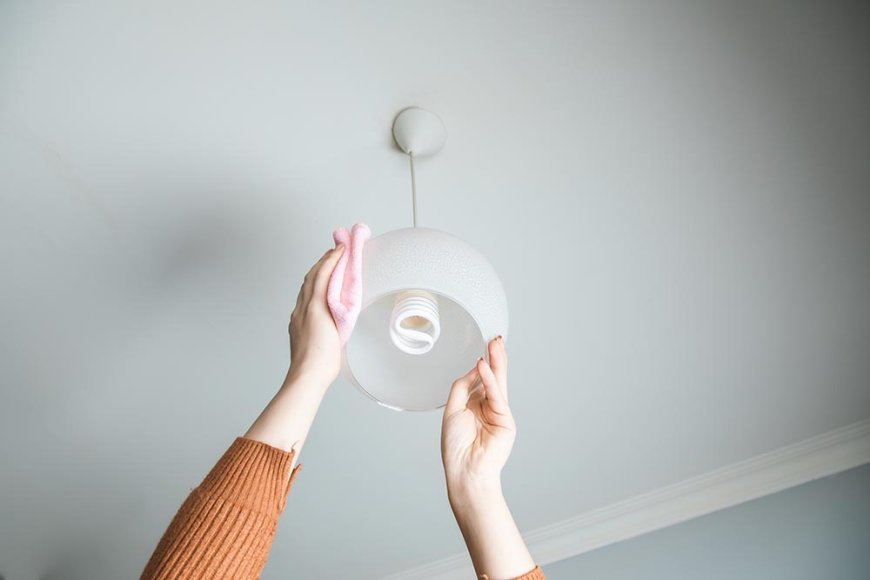How to Maintain and Clean Flush Ceiling and Spotlight Fixtures?

Why Your Ceiling Lights Are Secretly Costing You Money Without Proper Care
Modern homeowners recognise that proper maintenance of lighting fixtures extends their operational lifespan while preserving their aesthetic appeal. Flush ceiling lights UK installations require specific attention due to their proximity to dust accumulation zones and their integrated design nature. Professional maintenance specialists emphasise that regular upkeep prevents costly replacements and maintains optimal light output efficiency. The construction materials used in contemporary fixtures, particularly LED components, demand careful handling techniques that differ significantly from traditional lighting systems. Understanding these requirements forms the foundation for effective maintenance routines that protect both functionality and visual appeal.
The Critical Safety Steps Most Homeowners Skip Before Cleaning Ceiling Fixtures
Safety protocols must be prioritised before attempting any maintenance work on ceiling-mounted lighting systems. Qualified technicians recommend switching off electrical supply at the circuit breaker rather than relying solely on wall switches to ensure complete power isolation. The cooling period following switch-off allows heated components to reach safe handling temperatures, particularly important for spotlight ceiling light fixtures that generate concentrated heat during operation. Appropriate ladder positioning on stable, level surfaces prevents accidents during overhead work, while the use of non-conductive cleaning materials eliminates electrical hazard risks. Professional maintenance teams consistently emphasise that rushing safety procedures leads to preventable accidents and potential fixture damage.
The Professional's Secret Method for Cleaning Flush Ceiling Lights Without Damage
The cleaning process for flush-mounted fixtures begins with careful removal of protective covers or diffusers, which typically secure through twist-lock mechanisms or spring-loaded clips. Gentle cleaning solutions comprising warm water and mild detergent effectively remove accumulated dust and grime without damaging decorative finishes or LED components. Microfibre cloths provide superior cleaning results while preventing scratches on glass or acrylic surfaces that could impair light distribution quality. The fixture housing requires attention to mounting points where dust commonly accumulates, affecting both appearance and heat dissipation efficiency. Thorough drying before reassembly prevents moisture-related corrosion and maintains electrical safety standards throughout the cleaning process.
How to Keep Spotlight Systems Running Like New for Years
Spotlight ceiling light systems demand specialised maintenance approaches due to their directional components and adjustable mechanisms. The pivoting elements require periodic lubrication using appropriate electrical contact cleaners to maintain smooth operation and prevent mechanical wear. Individual spotlight heads benefit from careful cleaning of reflective surfaces using alcohol-based solutions that eliminate fingerprints and dust without leaving residue. Track-mounted systems necessitate attention to electrical connections along the track length, ensuring secure contact points that prevent flickering or intermittent operation. Regular inspection of transformer units, particularly in low-voltage installations, identifies potential issues before they compromise system performance or safety.
The Smart Homeowner's Guide to Never Forgetting Fixture Maintenance Again
Professional lighting maintenance follows structured schedules that account for environmental factors and usage patterns affecting fixture condition. High-traffic areas with increased dust exposure require monthly cleaning attention, while protected spaces may extend intervals to quarterly maintenance sessions. Seasonal inspections coinciding with daylight saving changes provide convenient reminders for comprehensive system evaluation and component replacement planning. Documentation of maintenance activities, including cleaning dates and component replacements, enables proactive scheduling and warranty claim support when required. Consistent application of maintenance schedules prevents degradation accumulation that could necessitate premature fixture replacement or professional restoration services.
Warning Signs Your Ceiling Lights Are About to Fail (And When to Call an Expert)
Certain maintenance indicators suggest the need for qualified electrical technician involvement rather than homeowner intervention. Flickering lights, unusual noise generation, or inconsistent dimming responses indicate potential electrical faults requiring diagnostic expertise and specialised tools. Heat discolouration around fixture mounting points suggests inadequate ventilation or overloading conditions that pose fire safety risks if left unaddressed. Persistent cleaning challenges or component deterioration may indicate manufacturing defects or installation issues requiring professional assessment and potential warranty claims. Early recognition of these warning signs prevents minor issues from developing into major electrical hazards or expensive replacement requirements.Flickering lights, buzzing sounds, or dimming brightness can signal your ceiling lights are nearing failure. Burnt smells or frequent bulb replacements are red flags too. Don’t ignore these issues—faulty wiring or fixtures may pose fire risks. Call a professional electrician if problems persist or worsen to ensure safety and reliability. Ceiling lights showing unusual behavior—like flickering, humming, overheating, or frequent bulb failure—can indicate deeper electrical issues.
What's Your Reaction?

























































